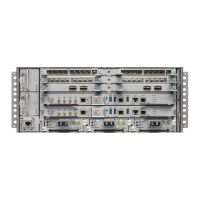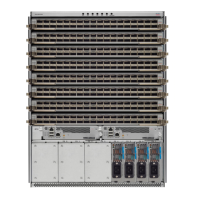PurposeCommand or Action
(Optional) Ends the definition of a route policy and exits
route policy configuration mode.
end-policy
Example:
Step 3
RP/0/RP0/CPU0:router(config-rpl)# end-policy
Specifies the autonomous system number and enters the
BGP configuration mode, allowing you to configure the
BGP routing process.
router bgp as-number
Example:
RP/0/RP0/CPU0:router(config)# router bgp 120
Step 4
Places the router in neighbor configuration mode for BGP
routing and configures the neighbor IP address as a BGP
peer.
neighbor ip-address
Example:
RP/0/RP0/CPU0:router(config-bgp)# neighbor
172.168.40.24
Step 5
Specifies either an IPv4 or IPv6 address family unicast and
enters address family configuration submode.
address-family { ipv4 | ipv6 } unicast
Example:
Step 6
To see a list of all the possible keywords and arguments for
this command, use the CLI help (?).
RP/0/RP0/CPU0:router(config-bgp-nbr)#
address-family ipv4 unicast
Applies the specified policy to inbound routes.
route-policy route-policy-name { in | out }
Example:
Step 7
RP/0/RP0/CPU0:router(config-bgp-nbr-af)#
route-policy drop-as-1234 in
commit
Step 8
Configuring BGP Attribute Filtering
Perform the following tasks to configure BGP attribute filtering:
SUMMARY STEPS
1. configure
2. router bgp as-number
3. attribute-filter group attribute-filter group name
4. attribute attribute code { discard | treat-as-withdraw }
DETAILED STEPS
PurposeCommand or Action
configure
Step 1
Routing Configuration Guide for Cisco NCS 6000 Series Routers, IOS XR Release 6.4.x
67
Implementing BGP
Configuring BGP Attribute Filtering
